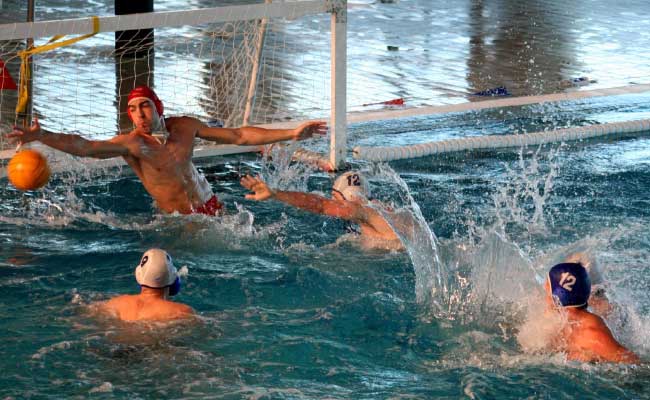Water Polo: The Exciting and Demanding Sport of Aquatic Warfare
Water polo is a unique and exciting team sport that combines elements of swimming, soccer, and basketball. Played in a pool with two teams of seven players each, water polo requires players to have strong swimming skills, as well as good ball handling, passing, and shooting abilities. In this article, we will explore the rules and strategies of water polo, as well as the physical and mental demands of this intense sport.
The Basics of Water Polo
Water polo is played in a pool that is 25 meters long and 20 meters wide, with a minimum depth of two meters. The game is divided into four quarters, each lasting eight minutes, with a two-minute break between each quarter. The team with the most goals at the end of the game wins.
Each team has seven players in the water at a time, including a goalkeeper who defends the goal. The other six players are called field players, and they try to score goals by throwing the ball into the opposing team’s goal. Players are not allowed to touch the bottom or sides of the pool, and must tread water or swim at all times.
The game starts with a swim-off, where one player from each team tries to win possession of the ball. After the swim-off, the attacking team tries to pass the ball around and create scoring opportunities, while the defending team tries to steal the ball and prevent the attacking team from scoring. Players can move the ball by passing it to their teammates, or by swimming with the ball themselves. Shots on goal can be taken from any position in the pool, and the ball can be thrown with one hand or two hands.
Fouls and Exclusions
Like any sport, water polo has rules and fouls that players must follow. If a player commits a foul, they may be excluded from the game for a period of 20 seconds or more, depending on the severity of the foul. Fouls include holding, sinking, pushing, or pulling an opponent, as well as impeding their progress or using excessive force.
Exclusions can also be given for unsportsmanlike conduct, such as arguing with the referee or using inappropriate language. If a player receives three exclusions in a game, they are disqualified from the rest of the game.
Strategy and Tactics
Water polo is a highly strategic game that requires both individual skill and teamwork. Teams must work together to create scoring opportunities, while also defending their own goal. Strategies can vary depending on the situation, but some common tactics include:
- The Counterattack: This is when a team quickly moves the ball up the pool after winning possession, before the opposing team has a chance to set up their defense. It can be a very effective way to score goals, but requires good communication and coordination between teammates.
- The Press: This is when a team puts pressure on the opposing team’s ball carrier, in an attempt to steal the ball or force a bad pass. It can be risky, as it leaves other players open for scoring opportunities, but can also be very effective if executed well.
- The Drop: This is when a team’s defense drops back to protect their own goal, while the opposing team has possession of the ball. It can be a good way to prevent goals, but also requires good communication and awareness from the defenders.
Physical and Mental Demands
Water polo is a sport that provides a number of physical and mental benefits to its players. The sport requires a high degree of cardiovascular endurance, as players must swim continuously for extended periods of time while also engaging in intense bursts of activity. It also requires a high level of strength and flexibility, as players must be able to throw, catch, and maneuver their bodies in the water.
In addition to these physical benefits, water polo also provides a number of mental benefits to its players. The sport requires a high degree of mental toughness, as players must be able to stay focused and composed in the face of physical and mental challenges.
![]()





